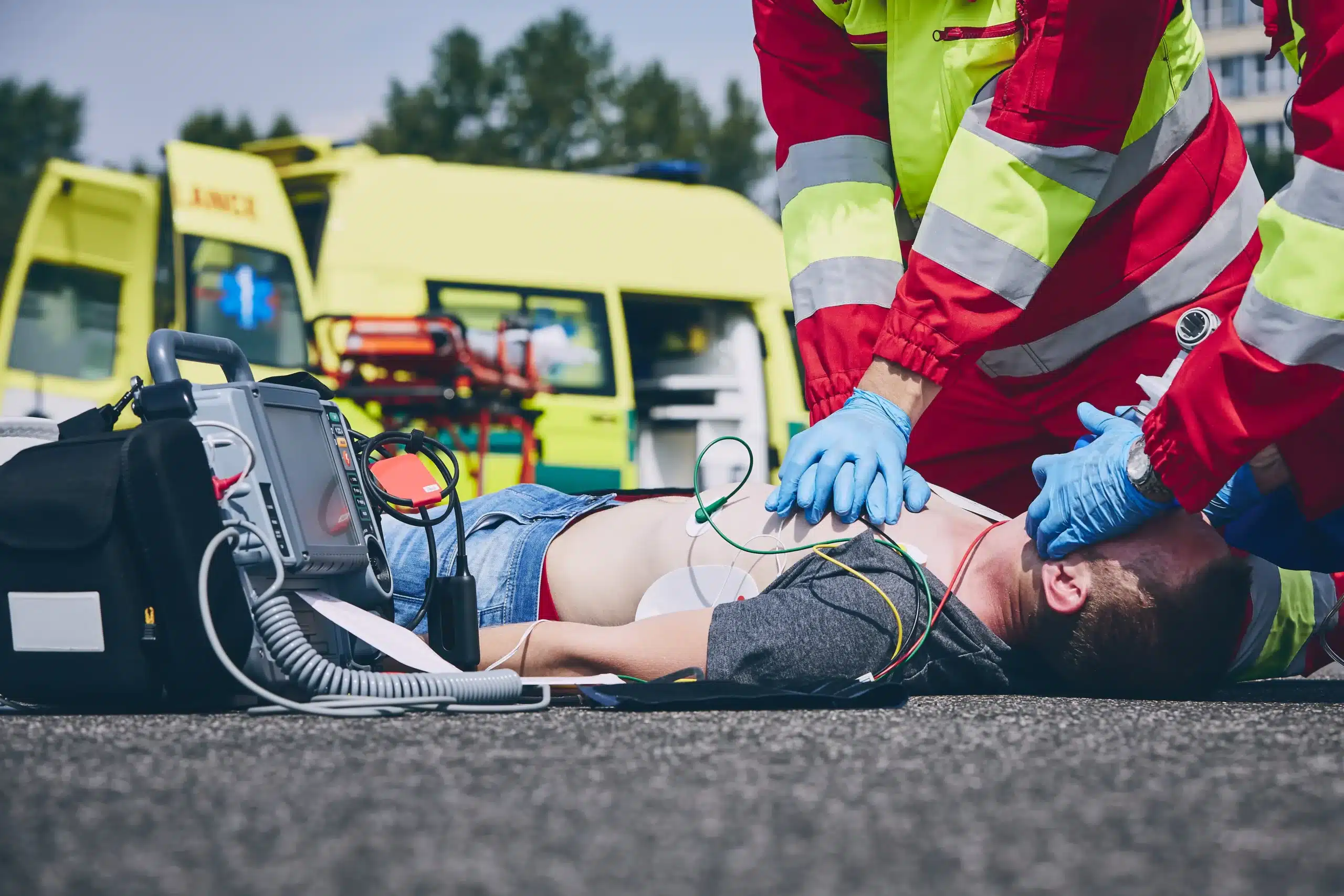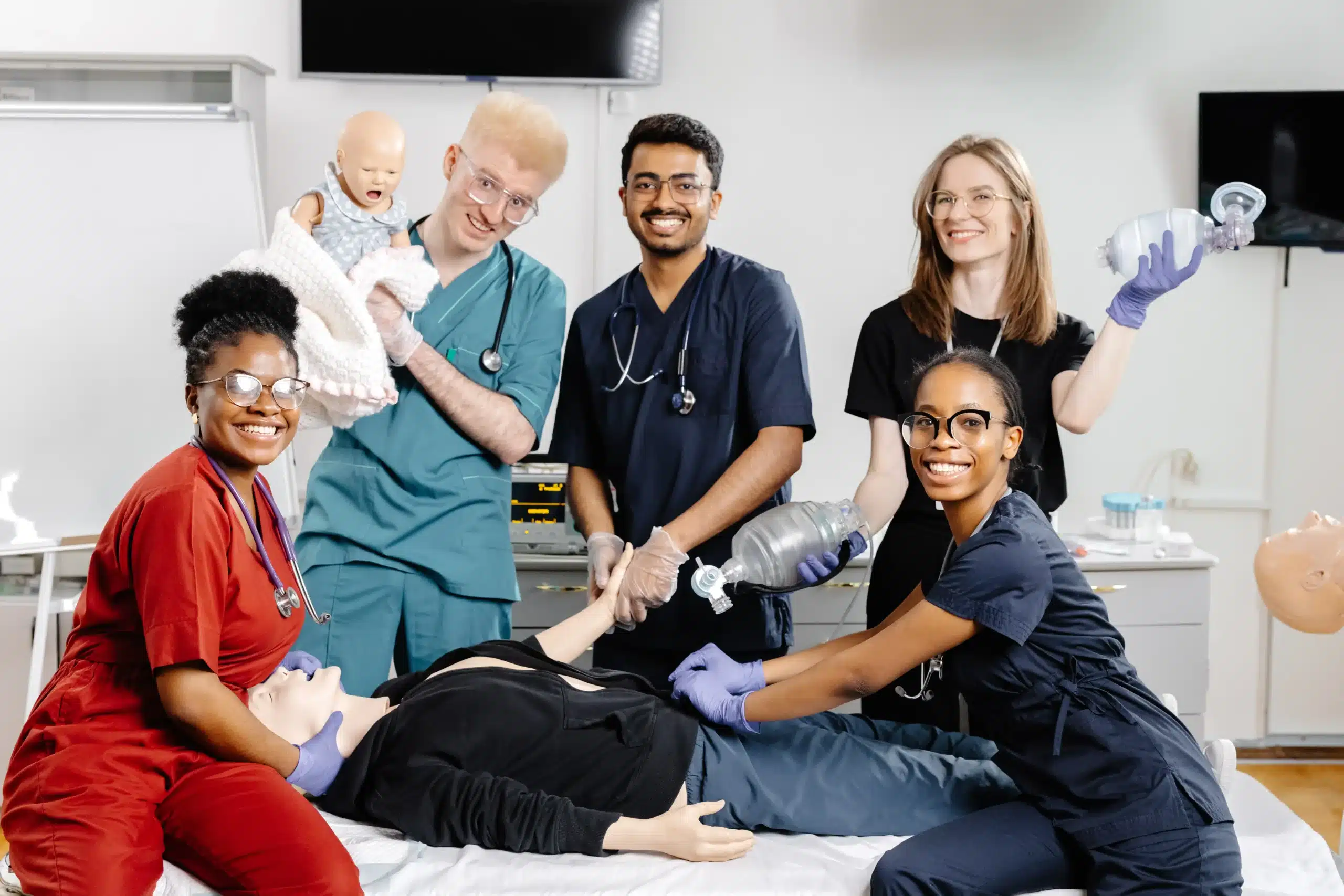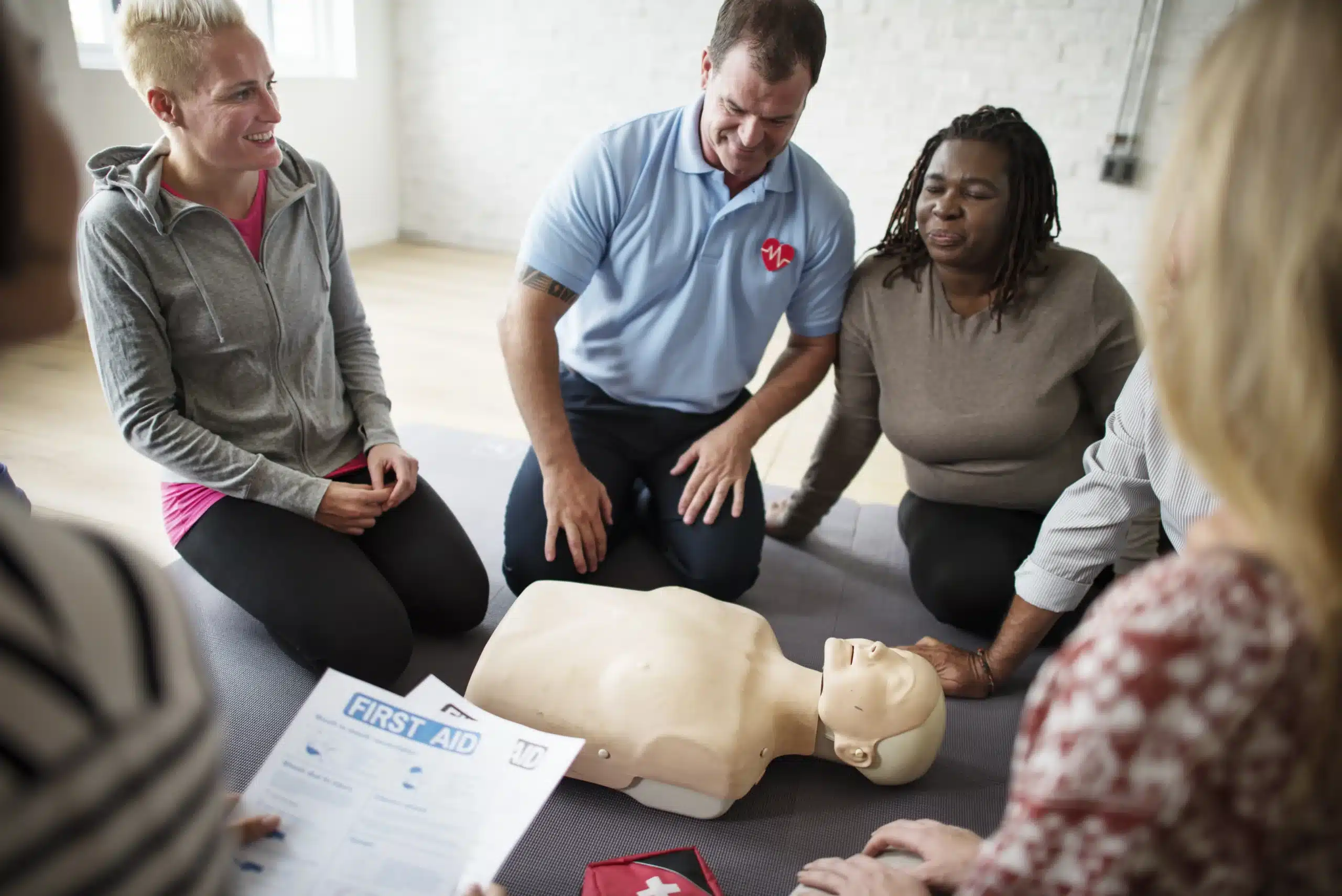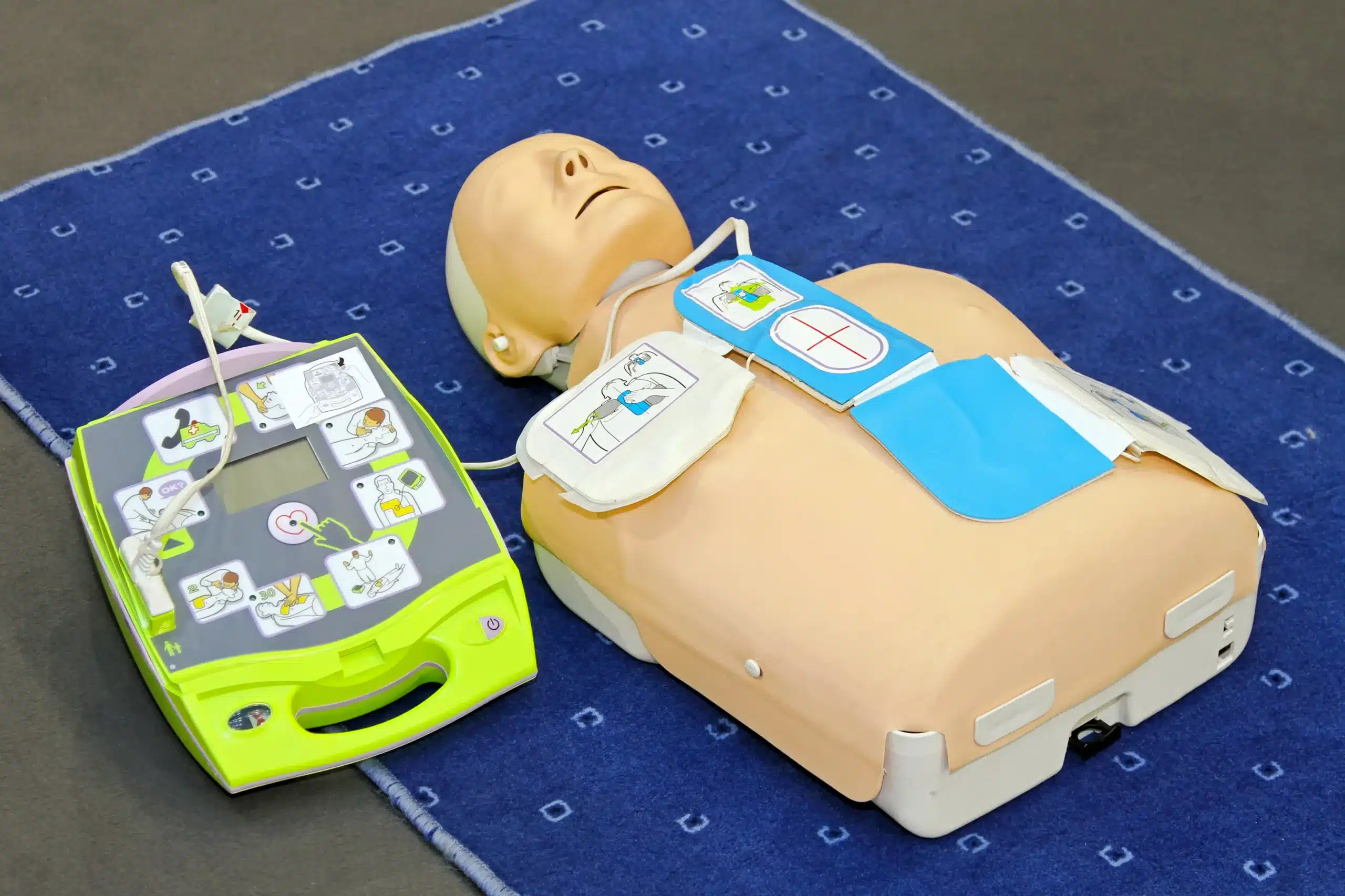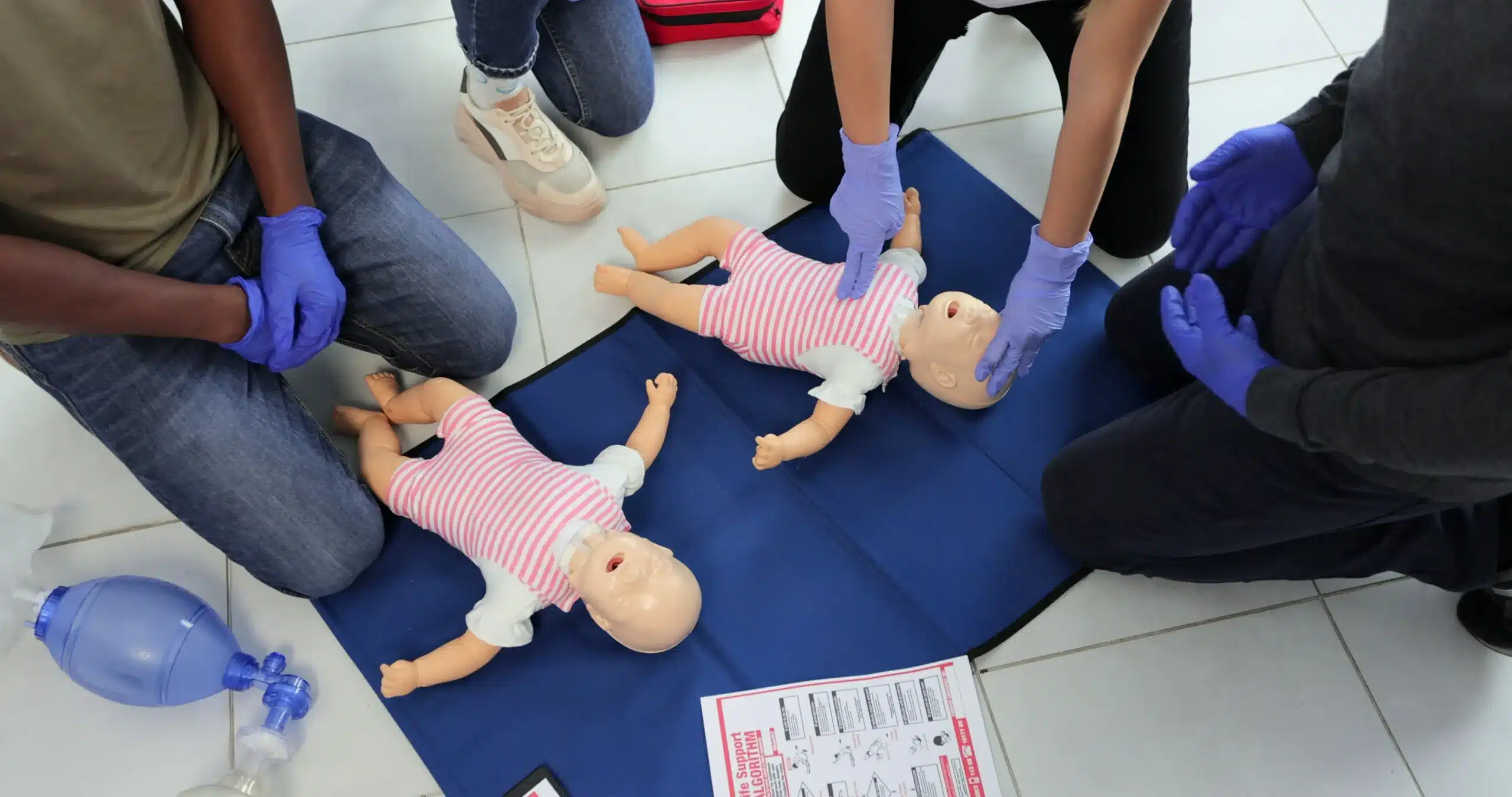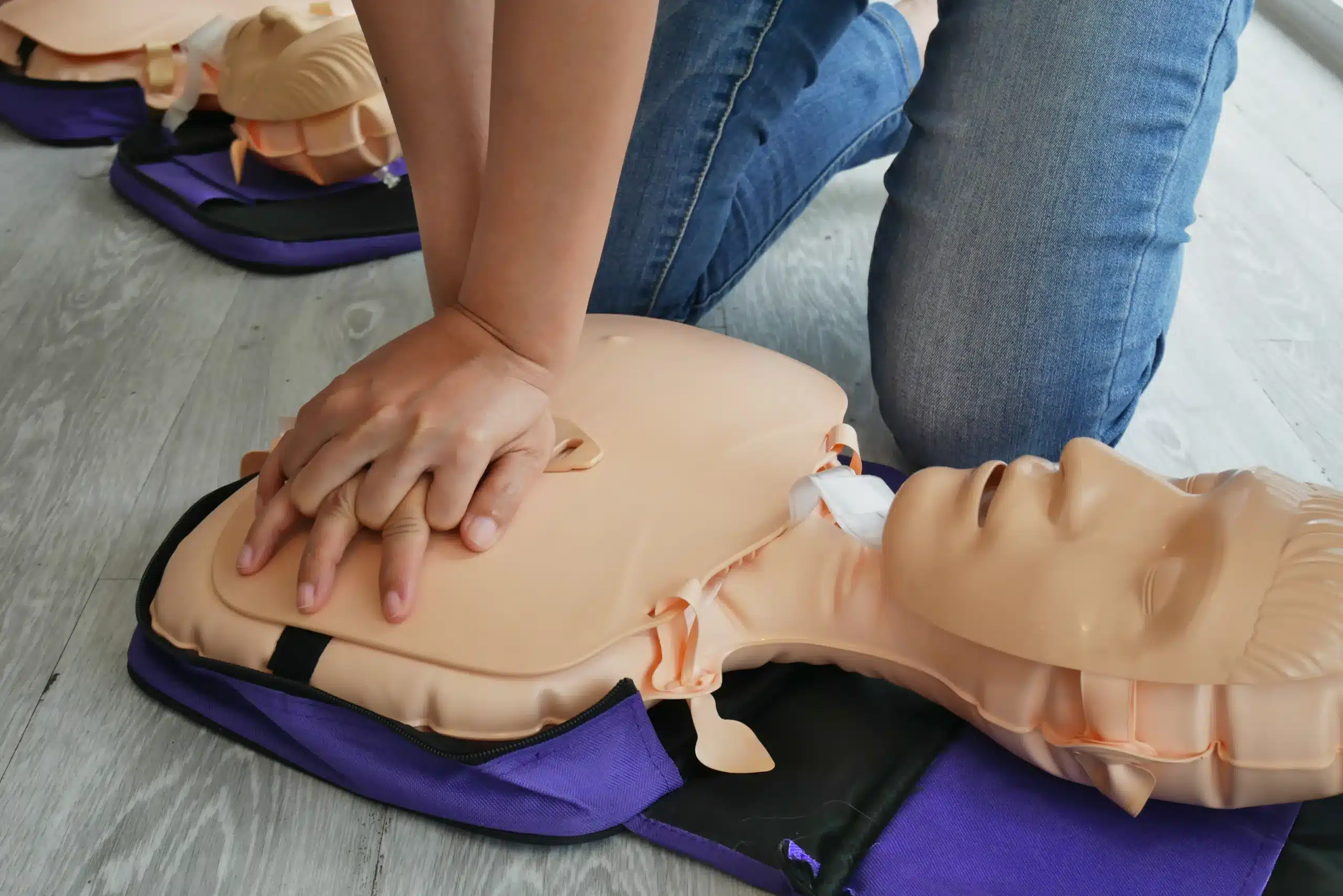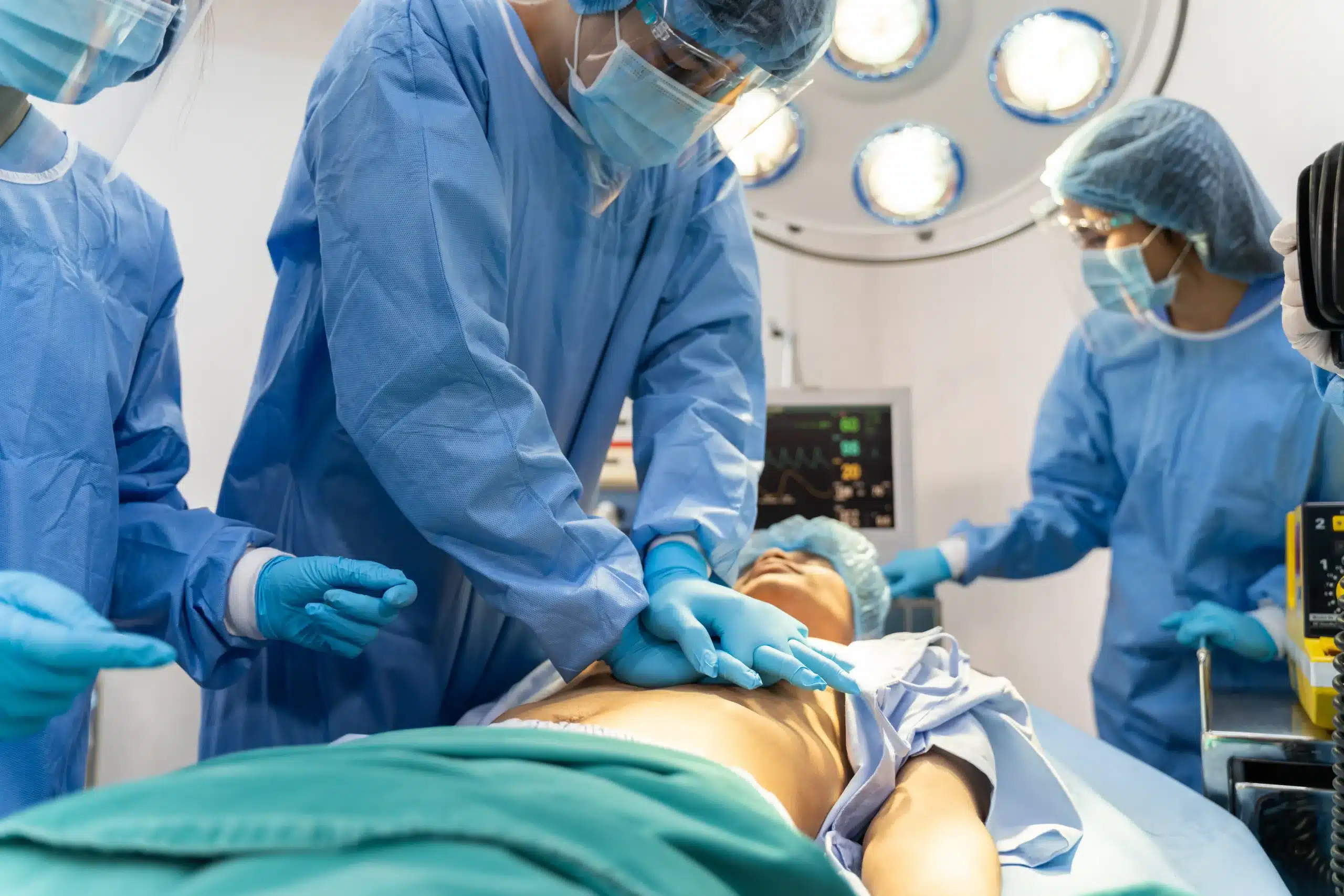Knowing how to respond in a medical emergency can make all the difference. If you’ve been searching for “BLS training near me,” you’re taking the first step toward gaining essential life-saving skills. This article is your go-to resource for understanding BLS training, covering everything from the basics of CPR and AED use to finding the right course and preparing for your training experience. We’ll explore who benefits from BLS certification, the various training formats available, and what you can expect during the course. Get ready to gain the confidence and skills to act quickly and effectively in critical situations.
Key Takeaways
- BLS certification gives you the skills to respond to medical emergencies. Learn essential life-saving techniques, including CPR, AED use, and airway management, to assist anyone needing immediate medical attention.
- Choose a BLS training program that fits your learning style and schedule. Explore options like in-person, online, or blended learning formats, and consider factors such as cost, provider reputation, and hands-on practice opportunities.
- Maintain your BLS skills through regular practice and renewal courses. Staying current with the latest guidelines ensures you can confidently and effectively provide basic life support when it matters most. Consider expanding your skillset with advanced certifications like ACLS and PALS.
What is BLS Training & Why is it Important?
BLS stands for Basic Life Support. It’s a critical training program that teaches people how to respond to life-threatening emergencies. BLS equips you with the skills to potentially save a life, whether you work in healthcare or not. These skills empower you to confidently handle emergencies until professional help arrives. Knowing BLS can make a real difference in various situations, from a medical crisis at home to an accident in a public place. It’s about being prepared and having the confidence to act when every second counts.
Key BLS Skills
A BLS course covers core life-saving techniques. You’ll learn how to perform high-quality CPR, including chest compressions and rescue breaths. The training also emphasizes the importance of early AED use and how to provide proper ventilation. Recognizing the signs of life-threatening emergencies is another key component, ensuring you can quickly assess a situation and take appropriate action. These skills work together to form a comprehensive approach to emergency response.
Who Needs BLS Certification?
BLS certification is essential for a range of individuals, especially those working in healthcare. Doctors, nurses, and other healthcare providers all benefit from BLS training. It’s also highly recommended for people in roles where they might encounter medical emergencies, such as lifeguards, teachers, and childcare providers. Even if you’re not a medical professional, having BLS training can be invaluable. It prepares you to assist family members, friends, or even strangers in need. Ultimately,
Find BLS Training Near You
Finding the right BLS training program is easier than you think. Several respected organizations and institutions offer courses, so you can find one that fits your schedule and learning style.
Top BLS Training Providers
Safety Training Seminars
Safety Training Seminars offers a range of American Heart Association (AHA) courses, including BLS certification, to prepare you for medical emergencies. The training provides essential life-saving skills, from CPR and AED use to airway management. With a focus on hands-on practice and knowledgeable instructors, you’ll gain the confidence to respond effectively in critical situations.
American Red Cross
The American Red Cross also provides BLS certification courses, equipping healthcare providers and public safety professionals with the skills to handle breathing and cardiac emergencies. They offer various course formats, including blended learning, which combines online coursework with in-person skills sessions.
American Heart Association
The AHA offers BLS courses in both blended learning and traditional classroom formats. All courses adhere to the latest AHA guidelines and result in the same AHA BLS Course Completion Card. This ensures you receive consistent, high-quality training regardless of your chosen learning method.
Local Hospitals & Medical Centers
Many hospitals and clinics offer BLS certification courses for their staff and the wider community. Check with hospitals and medical centers in your area to see if they offer BLS training. This can be a convenient option for those who prefer in-person instruction and want to learn from experienced medical professionals. You can often find information about these courses on the hospital’s website or by contacting their education department.
Find Courses Online
Online BLS training courses offer a flexible and convenient option, especially for busy professionals or those with limited access to in-person classes. You can learn at your own pace and complete the coursework from anywhere with an internet connection. Just be sure to choose a reputable provider that offers high-quality online instruction and meets AHA guidelines. Look for online programs that include interactive elements, video demonstrations, and practice tests to reinforce your learning.
Choosing a Provider: What to Consider
When selecting a BLS provider, consider factors such as course format (online, in-person, or blended), cost, and the training center’s reputation. Look for providers who offer hands-on practice, up-to-date materials, and experienced instructors. Reading reviews and comparing programs can help you make an informed decision and choose the best BLS training that meets your needs. Don’t hesitate to contact different providers and ask questions about their courses before enrolling. Factors like class size, instructor qualifications, and the availability of practice equipment can all impact your learning experience.
BLS Training: Formats & Costs
Choosing the right BLS training format depends on your learning style, schedule, and budget. Let’s explore the most common options: in-person, online, and blended learning. We’ll also cover typical costs and potential discounts.
In-Person Training
In-person BLS training offers a hands-on learning experience guided by expert instructors. This format allows for immediate feedback and gives you the chance to practice skills in a realistic environment. You’ll work with training manikins and other equipment, building confidence in your ability to respond to emergencies. As Safety Training Seminars points out in their BLS Training Near Me guide, BLS equips you with essential life-saving skills, from CPR and AED use to airway management. This format is great for people who learn best in interactive settings and value direct instruction. Safety Training Seminars offers in-person BLS, ACLS and PALS courses.
Online Courses
Online BLS courses offer flexibility and convenience. ACLS Medical Training highlights these benefits in their BLS course description, emphasizing the ability to study anytime, anywhere. These courses typically use interactive modules, videos, and assessments, allowing you to learn at your own pace. While online courses are convenient, they often require an in-person skills assessment to receive full certification.
Blended Learning
Blended learning combines online learning with in-person skills practice. The American Heart Association explains that all BLS course options, including blended learning, teach the same science-based skills and result in the same AHA BLS Course Completion Card. This format lets you complete the cognitive portion of the course online at your own pace, then schedule a shorter in-person session to demonstrate your skills.
Pricing & Discounts
BLS course costs vary depending on the training provider, format, and location. As a general guideline, initial BLS certification typically costs between $65 and $95, while recertification is usually around $65. Some providers, like Safety Training Seminars, offer a low price guarantee, ensuring you get the best value. You might also find discounts for group registrations, students, or certain professions. Ask about potential discounts when choosing a provider. Some providers offer combined CPR/First Aid courses, which can be a cost-effective option if you need both certifications. According to Palo Alto CPR Classes, these combined courses can cost around $85, as noted in their BLS Training Near Me guide. Remember to factor in any extra costs, such as study materials or travel, when budgeting for your training.
What to Expect in BLS Training
So, you’ve decided to get BLS certified—great choice! Knowing what to expect can help you feel prepared and confident going into your training. This section covers the key elements of BLS training, from course content to certification.
Course Content & Duration
BLS training equips you with fundamental life-saving skills applicable in various emergencies. You’ll learn how to perform CPR, use an AED, and provide basic airway management. These skills are crucial whether you’re a healthcare provider or simply want to be prepared to help in a crisis. The curriculum typically covers essential topics such as recognizing life-threatening emergencies, performing high-quality CPR for adults, children, and infants, using an AED, relieving choking, and basic first aid. Many courses also address scene safety, critical thinking, teamwork, and relevant legal considerations. A typical BLS provider course through Safety Training Seminars takes about four hours to complete.
Hands-On Practice
BLS training isn’t just about lectures and videos. Hands-on practice is a core component, allowing you to develop muscle memory and confidence in your skills. Expect to participate in simulated scenarios where you’ll perform CPR and other techniques on mannequins. This practical experience is essential for mastering the skills and ensuring you can apply them effectively in a real emergency. Some courses, like those offered by the American Heart Association, may involve an online component combined with an in-person skills assessment.
Certification & Validity
Upon successful completion of your BLS training, you’ll receive an official BLS Provider Course Completion eCard via email. This certification is typically valid for two years and demonstrates your proficiency in BLS skills. It’s often required for healthcare professionals and other roles. Keep track of your certification’s expiration date to ensure you stay up-to-date with the latest guidelines and maintain your credentials.
Renewing Your Certification
Staying current with your BLS skills is vital. Renewal courses are available for those whose certification is nearing its expiration date, often within 30 days of expiring. If your certification has already expired, you’ll need to take a recertification course. Check with your original training provider or other organizations like Safety Training Seminars for available renewal options. Recertification courses often cover updates to guidelines and best practices, ensuring you have the most current knowledge and skills.
Prepare for BLS Training & Maximize Your Learning
Before you jump into a BLS course, take a moment to prepare. A little prep work goes a long way in ensuring you get the most out of your training. This section clears up common misconceptions, offers practical tips for course success, and points you toward helpful resources.
Common BLS Misconceptions
One common misconception is that you can get fully certified in BLS entirely online. While online learning offers flexibility and convenience for the cognitive portion, the American Heart Association requires an in-person skills assessment with a certified instructor. This hands-on component is essential for mastering the practical application of life-saving techniques. So, while you can definitely learn a lot online, remember to schedule that all-important in-person skills check.
Tips for Course Success
Finding the right BLS provider is key to a positive learning experience. Consider factors like the course format (online, in-person, or blended learning), the overall cost, and the training center’s reputation. Safety Training Seminars offers a variety of options to fit your schedule and budget. BLS training equips you with essential life-saving skills—from CPR and AED use to airway management—giving you the confidence to respond effectively in medical emergencies. Knowing these core skills are covered should give you a good sense of what to expect. For those located in Northern California, CPR courses are available daily across our 60+ offices.
Resources for Extra Practice
Want to go above and beyond? BLS training reviews offer valuable insights from others who have completed the program. Reading these reviews can give you a feel for different learning styles and help you choose the best class for your needs. The quality of course materials is also crucial for effective BLS certification, so don’t hesitate to ask potential providers about their resources. Safety Training Seminars is committed to providing high-quality training materials and a low price guarantee. Check out our low price guarantee details for more information.
The Importance of Continued Learning
BLS certification isn’t a one-and-done deal. It’s about maintaining and refreshing your skills so you can confidently administer basic life-saving measures to those experiencing cardiac or respiratory arrest. Studies show that recent BLS training can significantly improve attitudes toward CPR among healthcare providers, highlighting the importance of staying up-to-date. After completing your BLS training, look for opportunities to practice and refresh your knowledge to maintain your confidence and competence. Consider joining refresher courses or practicing with friends or family to keep your skills sharp. You can also explore additional courses, such as ACLS and PALS, to further enhance your life-saving abilities.
Related Articles
- BLS Certification in San Francisco: Your Complete Guide – San Francisco CPR Classes
- BLS for Healthcare Providers in San Francisco – San Francisco CPR Classes
- Find the Best BLS Classes in San Francisco – San Francisco CPR Classes
- BLS Courses in SF: Your Guide to Getting Certified – San Francisco CPR Classes
- Basic Life Support (BLS) in SF: The Ultimate Guide – San Francisco CPR Classes
Frequently Asked Questions
How long does BLS certification last, and how do I renew it? BLS certification is typically valid for two years. When your certification is close to expiring, usually within the last 30 days, you can take a renewal course. If your certification has already expired, you’ll need to take a recertification course. Check with your original training provider or other organizations offering BLS courses for renewal options.
What if I’m not a healthcare professional? Is BLS training still relevant for me? Absolutely! While BLS certification is often a requirement for healthcare professionals, it’s valuable for anyone who wants to be prepared to help in a medical emergency. Knowing BLS can empower you to assist family, friends, or even strangers in need, whether at home, at work, or out in public.
What’s the difference between online BLS training and in-person training? Online BLS training offers flexibility, allowing you to complete the coursework at your own pace from anywhere with an internet connection. However, most organizations, including the American Heart Association, require an in-person skills assessment to receive full certification. In-person training provides hands-on practice and direct feedback from instructors, allowing you to develop muscle memory and confidence in your skills. Blended learning combines the convenience of online learning with the benefits of in-person skills practice.
How much does BLS training typically cost? BLS course costs vary depending on the provider, format, and location. Initial certification generally ranges from $65 to $95, while recertification is usually around $65. Some providers offer discounts for group registrations, students, or specific professions. It’s always a good idea to inquire about potential discounts when choosing a provider.
What kind of skills will I learn in a BLS course? BLS courses cover essential life-saving techniques, including high-quality CPR for adults, children, and infants, AED use, relief of choking, and basic airway management. You’ll also learn how to recognize life-threatening emergencies and respond effectively. Many courses also cover topics like scene safety, critical thinking, teamwork, and relevant legal considerations.


